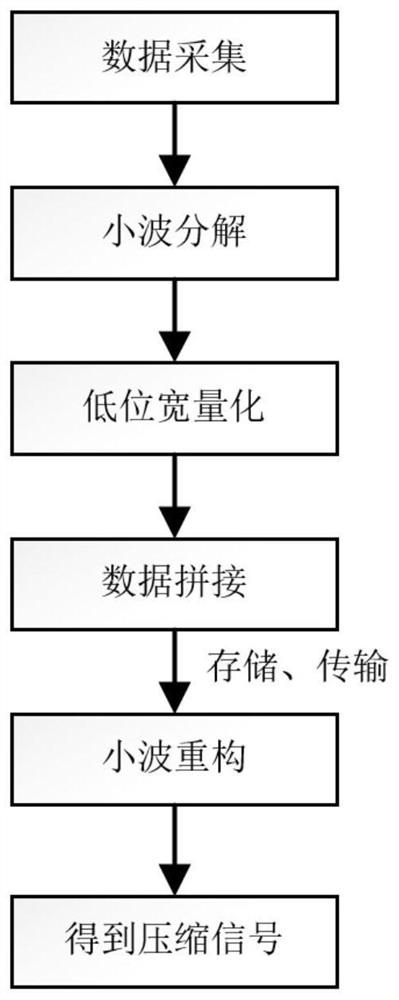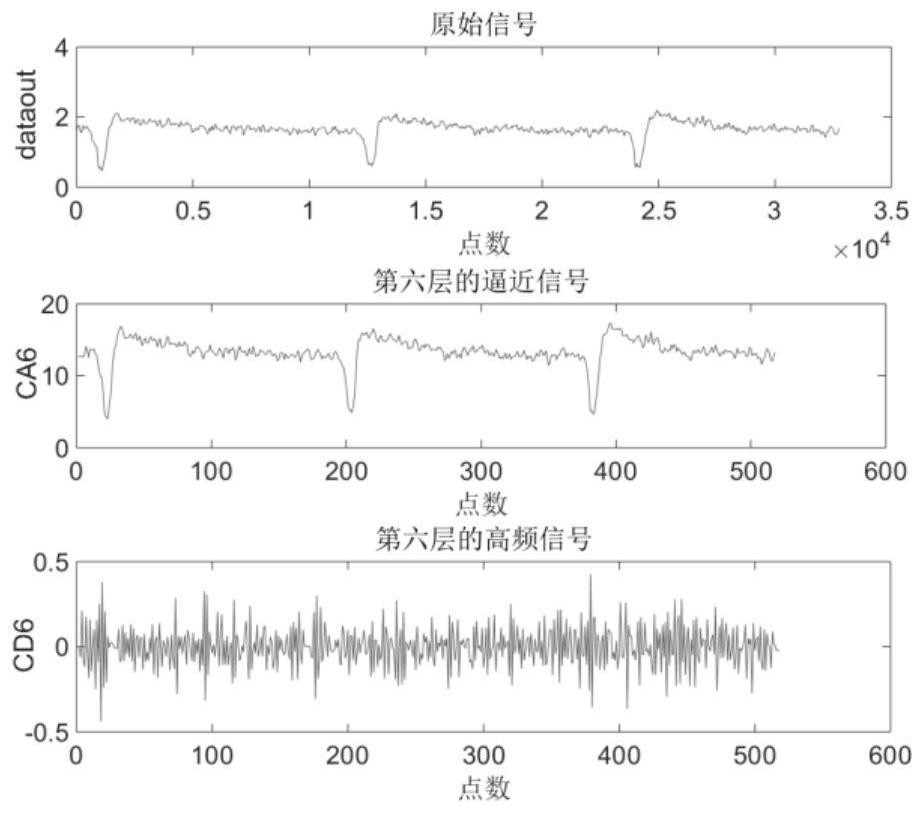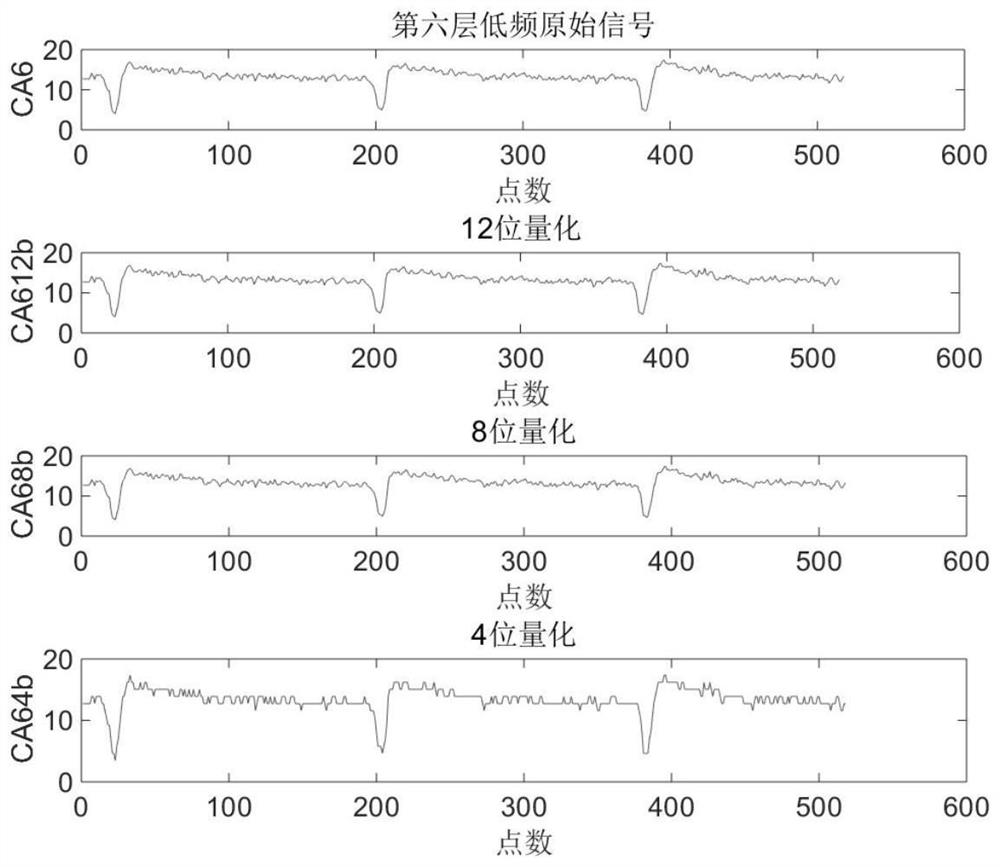Method for compressing detection signal data of missile-borne detector
A technology for detecting signals and detectors, applied in the field of signal processing, can solve the problems of a large amount of one-dimensional waveform data, limited hardware resources, inconvenient data storage and data transmission, etc., to reduce the amount of data, improve the bus bandwidth, and save storage. and the effect of transferring resources
- Summary
- Abstract
- Description
- Claims
- Application Information
AI Technical Summary
Problems solved by technology
Method used
Image
Examples
Embodiment 1
[0053] combine figure 1 , a method for compressing the detection signal data of the missile-borne detector, the steps are as follows:
[0054] Step 1. The missile-borne detector obtains a one-dimensional waveform signal; the waveform of the signal with a target is a bell-shaped pulse, and the waveform without a target is a small fluctuation at a fixed voltage, such as figure 2 As shown; it is converted into a 16bit (data point) digital signal A by the ADC of the missile computer 0 , go to step 2.
[0055] Step 2. Convert the digital signal A 0 Perform 6-layer wavelet decomposition to obtain 6-level wavelet coefficients D 1 ~D 6 and 1st scale factor A 6 , among which, the "db4" wavelet is selected as the wavelet base when the wavelet decomposition is performed, and the number of decomposition layers is 6 layers. The sixth-layer wavelet coefficients and scale coefficients obtained by decomposition are as follows: figure 2 shown. digital signal A 0 The bit width of the...
PUM
 Login to View More
Login to View More Abstract
Description
Claims
Application Information
 Login to View More
Login to View More - R&D
- Intellectual Property
- Life Sciences
- Materials
- Tech Scout
- Unparalleled Data Quality
- Higher Quality Content
- 60% Fewer Hallucinations
Browse by: Latest US Patents, China's latest patents, Technical Efficacy Thesaurus, Application Domain, Technology Topic, Popular Technical Reports.
© 2025 PatSnap. All rights reserved.Legal|Privacy policy|Modern Slavery Act Transparency Statement|Sitemap|About US| Contact US: help@patsnap.com



